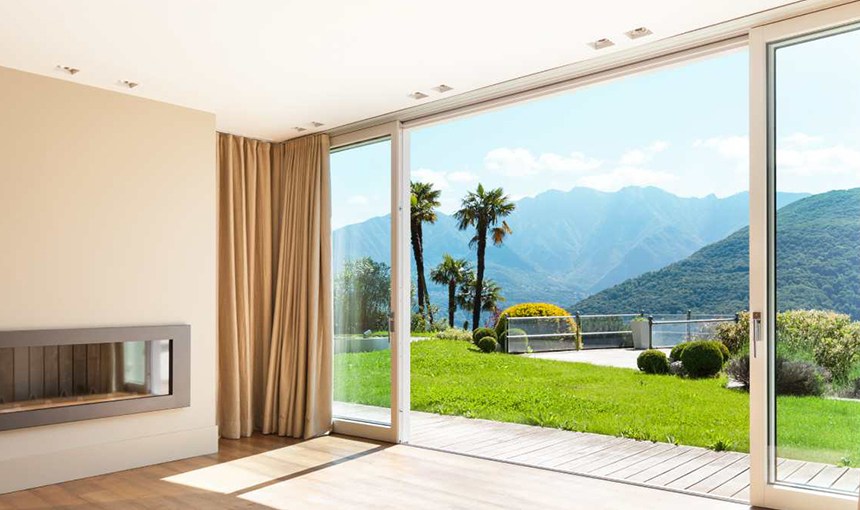How do uPVC Windows Save Energy?
In a period characterized by heightened environmental issues and an urgent call for energy preservation, uPVC (unplasticized polyvinyl chloride) windows have risen as an eco-friendly remedy embraced by both homeowners and enterprises. These windows, recognized for their energy efficiency, have garnered favour not just for their visual charm but also for their capacity to curtail energy usage and subsequently diminish utility costs.
1. Insulation Qualities of uPVC
One of the foremost attributes celebrated in uPVC windows for their energy-conserving prowess lies in their outstanding insulation properties. Unlike conventional wooden or aluminium frames, uPVC frames exhibit limited heat or cold conductivity. This results in their role as an effective barrier, effectively impeding the exchange of heat between a building's interior and exterior.
2. Optimal Thermal Efficiency
uPVC windows are crafted with multi-chambered frames that capture air, establishing a thermal shield. This architectural design significantly curtails heat loss during winter and prevents excessive heat infiltration during the summer. Consequently, homeowners can relish a more consistent indoor temperature, thereby diminishing the need for excessive heating or cooling.
3. Minimized Drafts
Drafts often represent a prominent avenue for energy wastage in older residences with traditional windows. uPVC windows are meticulously sealed, eradicating drafts and ensuring the retention of conditioned air indoors. This not only enhances interior comfort but also alleviates the demand for heating and cooling systems, ultimately culminating in energy efficiency.
4. Double and Triple Glazing
To further amplify their energy-conservation capabilities, uPVC windows are frequently equipped with double glazing or, in some cases, even triple glazing. This entails the installation of multiple layers of glass separated by an insulating layer of air or gas, thereby fortifying their insulation properties.
5. Enhanced Thermal Insulation
Double and triple glazing plays a pivotal role in elevating the thermal insulation properties of uPVC windows. These additional layers of glass serve to curtail heat transfer, rendering it significantly more challenging for external temperatures to influence the indoor climate. Consequently, there's a substantial reduction in energy consumption for heating or cooling purposes.
6. Acoustic Insulation
Beyond the advantages in energy conservation, double and triple glazing also deliver superior sound insulation. This translates into a quieter and more serene indoor environment, further elevating the comfort and overall quality of life for occupants.
7. Minimal Maintenance
In contrast to traditional wooden windows that demand frequent painting and maintenance to ward off rot and decay, uPVC windows are virtually maintenance-free. This not only saves homeowners valuable time and effort but also reduces the environmental footprint associated with the production and disposal of maintenance materials.
8. Longevity and Robustness
Another contributing factor to energy savings with uPVC windows is their exceptional longevity and durability. These windows are renowned for their resilience against environmental elements such as moisture, UV radiation, and pollution. Consequently, they boast a longer lifespan when compared to alternative window materials.
9. Extended Lifespan
The prolonged lifespan of energy efficient uPVC windows translates to a reduced need for frequent replacements, setting the stage for diminished energy and resource demands associated with the manufacturing and installation of new windows. This, in turn, leads to more significant energy savings on a broader scale.
10. Environmental Considerations
Compared to other window materials, the production of uPVC windows tends to be notably energy efficient. Furthermore, uPVC is a recyclable material, with many manufacturers incorporating recycled uPVC into their window production processes. Beyond this, the energy savings attributed to the use of uPVC windows in buildings contribute to a reduction in greenhouse gas emissions, making them an environmentally responsible choice.
In Conclusion
uPVC windows from AIS Windows offer a multitude of benefits in the realm of energy conservation. Our outstanding insulation characteristics, incorporation of double or triple glazing, minimal maintenance demands, extended durability, and positive environmental footprint collectively contribute to lowered energy consumption within buildings. Whether for homeowners or businesses, the adoption of uPVC windows promises reduced utility costs and a decreased carbon footprint. As global emphasis continues to be placed on sustainability and energy efficiency, uPVC windows emerge as an indispensable element in creating environmentally friendly and economically sound living and working spaces.



